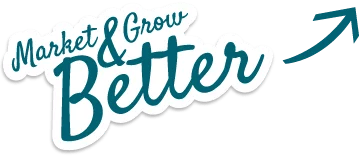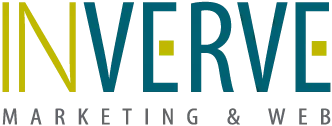.jpg?width=735&name=BlogMasthead_DigitalMarketingAttractOnlyIdealClients%20(1).jpg)
Wouldn’t it be great if all your customers were your best customers? No matter what industry you’re in, you probably have those potential clients and customers that your sales team loves to sell to and others that are … much harder for your sales team to see eye-to-eye with. By creating an ideal client profile, you can identify the type of person who tends to buy and be satisfied with your product.
For example, if you sell payroll software, you are probably looking for an human resources manager working for a growing company that's having trouble managing payroll by hand. Conversely, a small family business without the funds to buy new software or a large company that already has a system in place, are not ideal. This person is probably looking for information about time management and simple solutions, not detailed news of the accounting world. Having your ideal client defined helps your sales team identify people who are likely to be a good fit and anticipate what sort of questions these people are likely to have. As an added benefit, you can get a better idea of what types of people to focus on nurturing so they can find their way to your sales team.
Why You Need an Ideal Client Profile
Your sales team can use this profile to identify which prospects are a good fit and which are not. In addition, they can also use it to prepare to answer questions that your ideal clients often ask and better understand their buying process.
This profiling tool can also aid you in your marketing efforts by helping you create content that is relevant to your best types of clients. This will allow you to be intentional about the channels and messages that will reach the people most likely to be helped by your product or service, and not waste time attracting people that less than ideal. To market to your ideal clients, utilize HubSpot’s suggested steps of Personalization, Content Creation and Mapping, Segmentation, Keyword Research, and Sales Process. Here's a a look at each step.
1) Personalization
If you specialize in different service lines or industries, you can use personalization based on client profiles to customize your website to that group’s specific needs. A report from Venture Beat found that 70 to 94 percent of marketers have seen increases in key site performance indicators such as sales, by employing personalization.
2) Content Creation & Mapping
Once you know your ideal client profiles, you can create content that will engage those prospects and clients — whether this is a blog post, e-book, or sales enablement tool. You can then align your content by ideal client profile and life cycle stage, or where the prospect is in the buyer’s journey. You’ll want to write and package content differently depending on whether the potential client is simply getting to know your company, has been in contact with your business development team or has a proposal sitting on his or her desk.
3) Segmentation
Personalized emails can improve click-through rates by 14 percent, conversions by 10 percent, and drive 18 times more revenue than broadcast emails. With distinct ideal client profiles, you can segment your list and create campaigns that align with their buying process. You can also use these lists to segment by prospects and current clients, so you can market either new services or additional service lines. You could also create email drip campaigns based on whether you have had an initial meeting with the client, or if the client has been sent a proposal to further the relationship.
4) Keyword Research
Once you know how your ideal clients are searching and the language they use, you can create targeted articles that will be indexed by search engines and found by prospects during their search process. This could also help you to identify a target list of publications you want to pitch and potential partners you could advertise with.
5) Sales Process
The client profile will give you a better understanding of how your ideal client makes decisions, what sources they ask for recommendations, how they find an agency partner and the average sales cycle for each type. Using this information, you can mold your sales process to your prospects. This will help you to better understand when a proposal is actually necessary, what type of nurturing campaigns you should set up, what information the prospect needs and when, and how often you should communicate with the prospect.
Creating an ideal client profile — or a few — will help you to attract, qualify and sell to only these clients. And this is how you can truly stand out from the competition.
Once you complete your ideal client profile(s), you’ll be able to use these marketing activities in a more informed and relevant way.
How to Create Your Ideal Client Profile
A well-thought-out ideal client profile is crucial to your sales and marketing strategy. So how do you create one?
Start by looking at your current best customers. These are the people who are long-term, happy customers. Their problems fit exactly what your company is suited to help with. They’re seeing a great return on investment with you and operate within the budget and structure you specialize in. These people not only are happy with your product or service, but they also pay you on time, give good feedback, and are fun to work with. Once you’ve identified five to 10 of your best customers, it’s time to interview them.
By interviewing your best clients, you gain qualitative and quantitative information that will help you create a useful ideal client profile. Doing these interviews in person will give you the best information because you can connect with the person and ask follow-up questions if necessary, but you can also send out a survey. If you’re not sure what to ask, try this list of questions from HubSpot to get you started. This list will work best for you if you’re in a B2B industry, but B2C marketers can adapt this list to suit your needs as well.
Decision Maker Information
- What is your role?
- How long have you been at the company?
- How long were you employed at your previous role?
- What skills are required to do your job?
- What tools do you use in your job?
- Who do you report to? Who reports to you?
- What does a typical day look like?
- What people in your company make decisions about purchases?
Company Data
- In which industry or industries does your company work?
- What is the size of your company (revenue, employees)?
- Where are you located?
- What is your budget for [insert product or service here] per year?
- What percentage of this is used on outside resources — agencies, vendors, freelancers?
Goals & Challenges
- What are your job responsibilities and priorities?
- How is your job productivity measured?
- What does it mean to be successful in your role?
- What are your biggest challenges? Important successes?
Information Search Process
- What sites and publications do you frequently visit to learn new information for your job?
- What associations or groups do you belong to? What conferences do you attend?
- What social networks do you use and how do you use them?
- How do you begin the search for a new agency or vendor? Do you search for a company on Google? If so, what keywords do you use? Do you use a search firm or an online database?
Identifiers
- How do you handle conflict?
- Do you like to work independently or in a group?
- What style of communication works best for you?
Objections
- Why is it difficult to work with a company like ours? Why would you want to bring the work in-house?
- During the sales process, what points about our company made you hesitant to work with us?
- Where did you turn to find out information about our company from other sources?
Purchasing Decisions
- Why did you decide to work with us or buy our product?
- Why have you stayed with us for X years?
- What did the decision process look like for your team?
- How are we unique from other companies you have worked with?
- What are three important qualities you look for in a business like ours?
Create your Ideal Client Profile
Once you have the information from these interviews, it’s time to make your ideal client profile! Consider the things that kept coming up in interviews and create a profile with your ideal client’s:
- Background
- Demographics
- Personality/communication style
- Goals
- Challenges and how you can address these challenges
- Objections
- Purchasing process
- Your pitch for this type of client
This should be an in-depth and thoughtful profile that will guide your sales process. With this completed, you can shape your sales process around your ideal client. Have your sales team keep this profile in mind so they can identify when they’re talking to an ideal client. This will help your sales team speak to your ideal client’s goals and be prepared to respond to common questions and objections.
As a marketer, you can use this profile to attract people who your sales team is most likely to have success with. Meet your prospective clients on the platforms they are using during their research and decision-making process. Create content that speaks to their needs and answers their common questions in the formats they like best.
If you commit to marketing to an ideal client profile, you and your sales team can spend your time talking with the people who are good fits for your company and not waste precious time and energy on those who aren’t. Plus, your marketing will be intentional, focused, and on the right channels. This will help you accomplish your business growth goals in a much shorter time period.
Topics: marketing, digital marketing, marketing strategy






